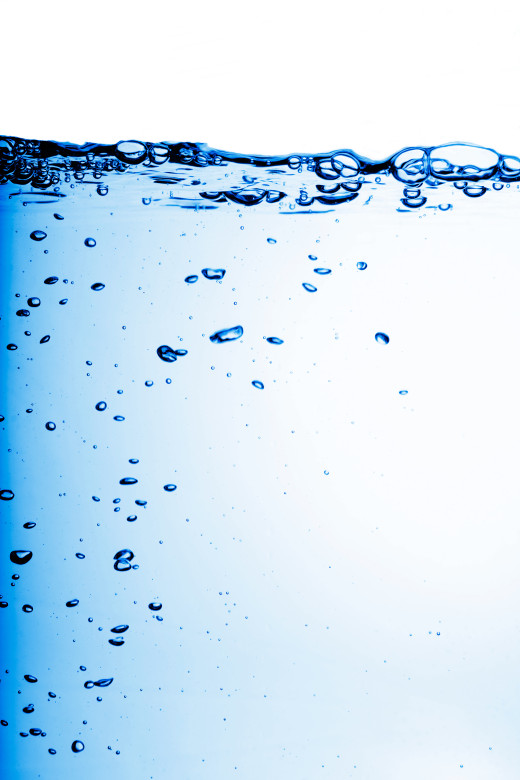— Sabita Kaushal, Prarthana Rao
“When the well is dry, we know the worth of water.” ― Benjamin Franklin
India has about 16% of the world’s population but only 4% of its water resources, according to a UNICEF Report titled Water in India: Situation and Prospects. The path to development demands more of this precious resource at an alarming rate. The Millennium Development Goals (MDGs), through its eight international development goals, greatly emphasise the need for sustainable access to safe drinking water as well as sanitation.
Judicious use of this resource is imperative but unless one knows how much water is being used, how can they take steps to limit their usage?
Water footprint
A water footprint helps one understand the amount of water being used at an individual level all the way to a national level and in the numerous  processes involved in manufacturing and producing our goods and services.
processes involved in manufacturing and producing our goods and services.
An accurate water footprint also takes into account the amount of water contaminated during the manufacturing and production process. This tool gives a solid water accounting framework and aids us all in our efforts to be more efficient and conservative with our water use.
The water footprint of an individual is the amount of water they use in and around their home, school or office throughout the day. It includes the water used directly, like that from a tap as well as the water used indirectly, like the water it took to produce the food they eat, the products they buy, the energy they consume and even the water they save by recycling.
The water footprint of a business, the ‘corporate water footprint’, is defined as the total volume of fresh water that is used directly or indirectly to run and support a business. The water footprint concept was introduced in 2002 by Arjen Y. Hoekstra from UNESCO-IHE .
A water footprint consists of three components:
- Blue water (fresh water in lakes, rivers, aquifers): Refers to the amount of surface and groundwater used to produce products. This includes the water that evaporates from these sources also.
- Green water (water from rainwater stored in the soil): Refers to the amount of rainwater evaporated from the soil.
- Grey water (polluted water): Refers to the volume of water required to dilute/remove the pollutants from used water to bring it back to a quality that is acceptable according to prescribed norms.
The business of water
With increasing scarcity of freshwater resources, industries are becoming more and more conscious of their usage pattern. Few companies have come up with strong water strategies and water disclosure by companies is the first step in this direction.
 A recent report by TATA showcases a water sustainability roadmap for the Tata Group and accounts for the water consumption and pollution in four companies of the Tata Group – Tata Steel, Tata Chemicals, Tata Motors and Tata Power. (https://magic.piktochart.com/embed/1875665-water-footprint-assessment-of-ta)
A recent report by TATA showcases a water sustainability roadmap for the Tata Group and accounts for the water consumption and pollution in four companies of the Tata Group – Tata Steel, Tata Chemicals, Tata Motors and Tata Power. (https://magic.piktochart.com/embed/1875665-water-footprint-assessment-of-ta)
How can you reduce your water footprint?
Direct footprint:
- Install water-saving toilets and showerheads
- Close the tap while brushing your teeth and shaving
- Use recycled water in the garden
- Harvest rainwater and use it for recharging groundwater or for secondary uses like washing cars and gardening.
Indirect footprint:
Be conscious of what you buy. Make sure that you buy products that have a comparitively lesser water footprint. For example, buy a product that is produced from a place that is less prone to water scarcity. Switch to products that have a lesser water footprint. Eat more vegetables than meat, choose tea over coffee. This will encourage industries to be more water conscious and transparent in their water consumption.
Calculate your water footprint
The Water Footprint Network has developed a calculator which can help individuals assess their water footprint based on their lifestyle and their location. The calculations are based on the water requirements per unit of product as in the country of residence.
Conclusion
How much of water does an individual use? How much water does a company use?Does it recycle any and most importantly how much does a finished product cost in terms of water? Only once such an valuation is carried out, can the water footprint, both in terms of fresh water used & polluted wastewater released, be reduced.
A transparent water accounting of an industry’s needs is a tool that can lead to better response strategies- strategies that are not only topical, but also custom built per location and season that will help consumers make an informed choice.
With India facing the bleak prospect of becoming a water scarce nation by 2020, this information should be our immediate priority. A data bank of this crucial knowledge is the first step to make industries more water sustainable.
Indian Standard Organisation (ISO) is working on a procedural standard on how to incorporate water footprint in a product Life Cycle Assessment (LCA). Responsible citizens too need to be aware of their duty, make wise choices and demand for transparency in information related to use of water for all products that they use.
It’s time industrial water disclosure changed from voluntary to mandatory. After all scarcity of water will lead to a drought in business too!
—
This article had been originally published on India Water Portal — http://www.indiawaterportal.org/











Recent Comments